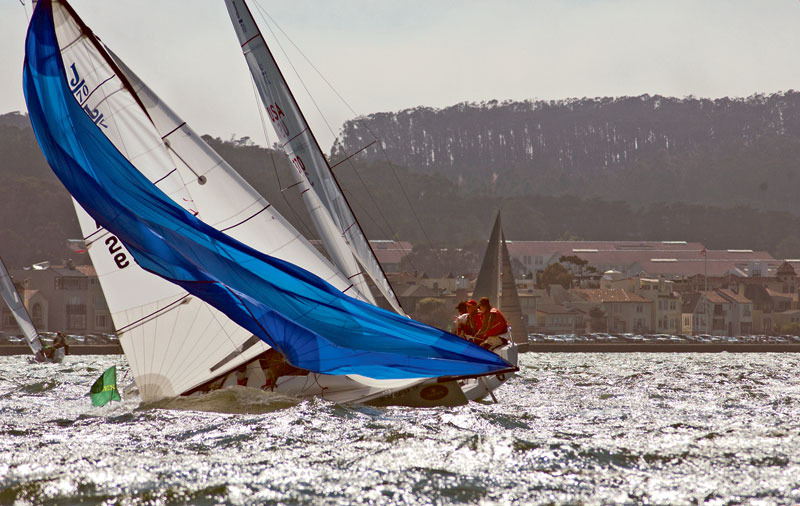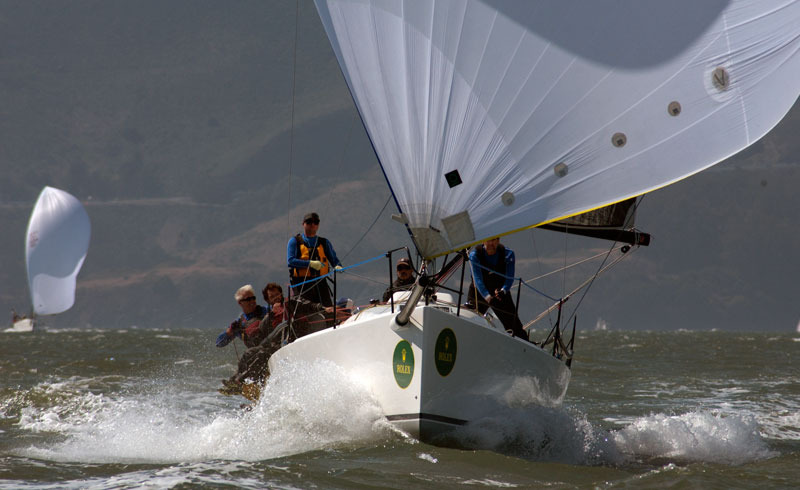
A Feeling About the Weather, Part 1
In this month’s Sightings, we posed the following question: Have the winds been getting lighter in California? This is not an uncommon query we’ve heard from some of our readers, and a seemingly relevant question to ask given the planet’s changing climate. Curious, we reached out to a few experts, who offered us an informal analysis, and also did some of our own journalists-with-liberal-arts-degrees investigation into meteorology — and psychology.
The short answer is no. There has been no significant decrease in wind strengths during the last few decades. But perhaps more importantly, we found that our perception of the weather is inextricably melded to our feelings and memories. If you’re a sailor, you probably have some kind of connection with the weather, and like many ‘relationships’, it can be deeply fraught with emotion. If you’re a sailor, you might intertwine a sense of angst, competitiveness, joy, fear, disappointment, disbelief or outright love (or its occasional opposite) with the weather. Add to this mix the proliferation of forecasting apps and the addictive qualities of our phones, and you’re talking about a seriously complex relationship worthy of psychoanalysis.

And on top of all that, add in whatever notion of climate change you believe in — assuming that you do. (A few readers disagree with the premise that it’s "a seemingly relevant question to ask given the planet’s changing climate." We’ll have a full discussion in part 2 of this story.) NASA’s Global Climate Change website tells us that we’re already experiencing a "loss of sea ice, accelerated sea level rise and longer, and more intense heat waves." How do we disseminate this broad, aberrant and to some, scary change? Everyone who does believe in climate change may unconsciously interpret it within their own idiosyncratic, highly subjective understanding of the weather. (Admittedly, we have heard people who say "Climate Change!" every time there’s a hot day in the winter just as many deniers will say look, it’s cold in the winter — obviously no climate change).
Amanda Delaney, the senior meteorologist at Weather Routing Inc. (WRI) researched two buoys near San Francisco. "The first was Station FTPC1 located east of the Golden Gate Bridge that had wind data from 2005 through 2017," Delaney wrote us. "After analyzing this, I found there wasn’t an overall decrease in the winds during that time period (it was variable throughout the period). I then reviewed another buoy west of San Francisco, station 46026. This had data that covered from 1982 to 2017. I wanted to see if any funneling winds going into San Francisco Bay diminished with time. The difference I found between 1996-2006 and 2007-2017 was that the average annual winds diminished by 0.2kts between the 10 year periods (there was some significant data missing in the 1980’s and in 2010-2011 from that buoy)."

We also looked at wind averages from San Francisco International Airport from 1948 to 2017, focusing just on the month of September from every other year, for the purpose of expedience. Since 1948 (which is as far back as the data go), wind speed averages in the month of September have ranged from about 10.5 to to 12.5 miles per hour. While the ’50s and ’60s saw wind strengths about one-mile-per-hour stronger compared to the following decades, averages have remained fairly consistent. Amanda Delaney said that, "we also need to take into account different instruments that were used to measure wind over time."
But we also need to take into account that we at Latitude 38 were doing a weather "analysis" (we hope you’re laughing with us). Our intention was to use information that was readily available to try to answer the question about a possible trend in diminishing winds. It was by no means a "snapshot" of any patterns; it was a snapshot of a snapshot of a very blurry snapshot. (We’re not sure what we would have done if we’d noticed a significant change.) Again, and to be clear, we’re only talking about feelings here, and not empirical realities.
So we’re curious about your relationship status with the weather. Do you obsess over it? Do you feel like you have a special bond, and can reliably read what the wind is going to do? Are you constantly staring at an app on your phone? Please, let us know.
